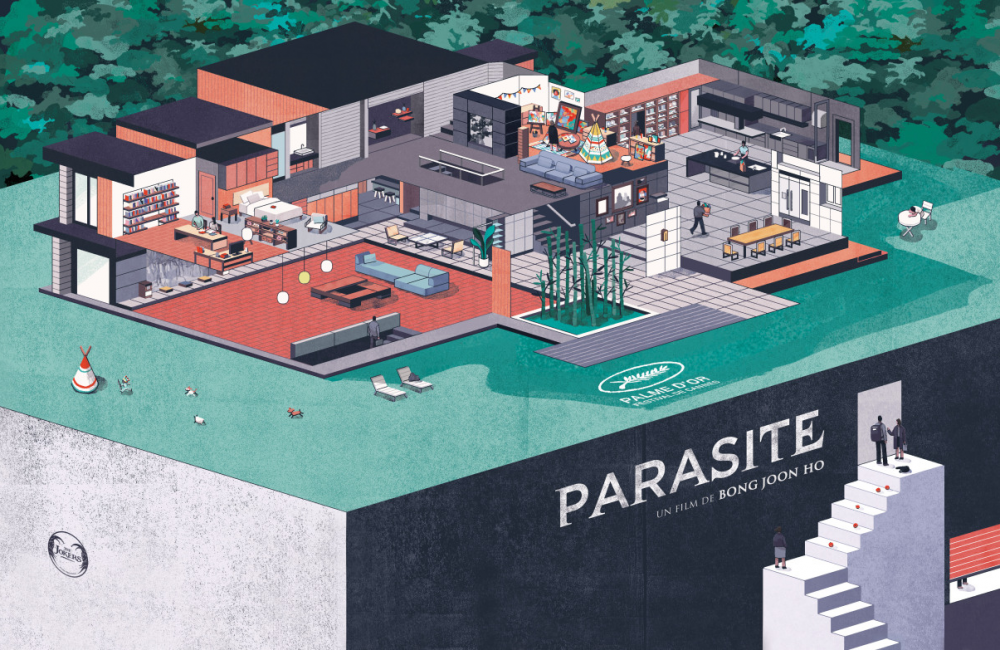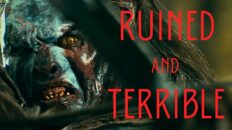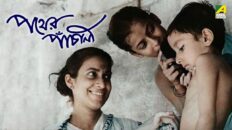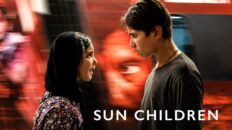A bug appears next to the father’s bite of bread and later from the same window, which is the Kim’s view of the outside world. Massive fumes invade their home as a result of the city’s fight against the serious bug problem.
A friend of Ki-woo’s (the son) comes to visit and brings a scholar’s rock as a gift with a message from his grandfather: the rock will bring wealth to the household it ends up at. He also brings an idea with himself that changes the lives of the Kims. Ki-woo can take his place as an English tutor for the daughter of a wealthy family, under a fake identity as a college graduate.
With Ki-woo we leave their low income bug-infested neighborhood at the bottom of the hill and enter a beautiful residence on top of the hill where a huge glass wall looks like a magnificent tableaux of lush green; the immaculate landscape of the world beyond the Park’s home. Their multi-story house seems like a bunch of giant cubes from the outside, and inside this modern architecture is a spotless home; exactly the opposite of the Kims’. Beautiful spaces, large enough to create a sense of alienation between family members, which also echo their loneliness and their need for luxury and fillers. Fillers sometimes in the form of a tutor or companion.

The superficial needs of the rich family build an invisible bridge which allows all the Kims to procure jobs and work for them, and with this transition we spend more time on top of the hill. But the Parks are clueless about a secret chamber—with the darkest story—in their own house which is the key to Bong Joon-Ho’s message in Parasite. There is no exact address for poverty under capitalism, and the upper class, so blinded and numb, forgets to take a look at their own living space to find it.
At first it is obvious that the poor family, under fake identities, are taking advantage of the wealthy like scavengers, but going deeper in the movie blurs the lines between the two and it becomes unclear which one is actually taking advantage of the other.
I asked a friend from Seoul to show me the poor areas on the map, and she found it impossible to mention the exact areas. I noticed that in Tehran, where I grew up, the same applies with urban growth under a corrupted system. In my current hometown, Las Vegas, the tunnels underneath the fancy, flashy Strip are home to the homeless, and hidden from eager eyes.
Bong Joon-Ho’s movies—from his first feature, Barking Dogs Never Bite to Parasite—are all immersed in a world diseased with inequality. A world with deep but invisible gaps between social classes. In his opinion that is the world we all live in, and the universal theme in his storytelling is Capitalism against humanity, whether it is a poor student wanting to survive (Barking Dogs Never Bite), a murder case forgotten in the slums and the poor looking for justice (Memories of Murder and Mother), nature’s revenge and its creatures suffering (The Host and Okja), or the struggle for survival between the ruling upper class and the poor (Snowpiercer and Parasite).
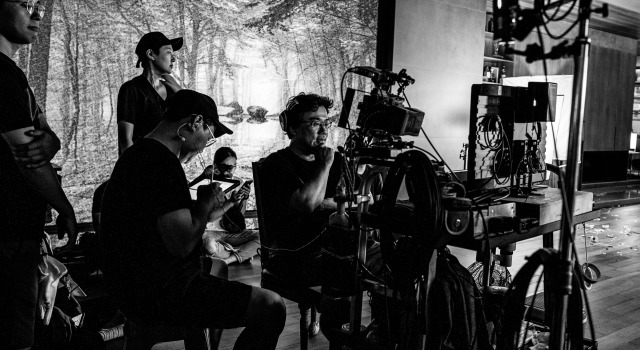
Parasite begins with charm and humor and it gradually turns into this fast pace hide-and-seek of a dance that is directed and shot impeccably, with stunning performances (specifically Kang Ho-song, the father of the Kim family and a veteran of Bong-Joon Ho’s movies). Every detail in the visual design and the sound and score is of the highest quality to show off the mastery of the filmmaker and the team who have created the movie. Parasite works like a modern symphony, and as the rhythm of each act/movement gets faster we forget what might be waiting for us at the end, when the harmonious bubble of both families’ happiness bursts.
We are left shocked and in awe at the end of the film, trying to figure out what exactly transpired. However, no map is needed to show where poverty exists in Bong Joon-Ho’s world, and no borders change the situation as we all are ignorant about the hidden pockets of despair and destitution in the cities where we live. In fact no zip codes could reveal where the darkness hides. Or who the real parasite is in our own communities.
In the final shot, we end up behind the same window at the Kims home. The rack of socks is still hanging, and Ki-woo takes a look at us to see if we get it this time.


